I will be at the SMART HUNGARY exhibition with my research friends at April 17th, 2024. The exhibition will be held at Akvárium Klub, Budapesten. Come, meet me!

Ethorobotics is a field where biologists who focus on animal and human behaviour, computer scientists, and engineers collaborate to figure out how we robots can be better at communicating and cooperating with humans. Unfortunately, we don’t instinctively know what’s polite or what might be scary or bothersome to people. Researchers in ethorobotics try to unravel these questions and shape them into forms of behaviour that robots can use. However, it’s not as simple as just mimicking human behaviour – far from it! My researcher friends believe that copying humans isn’t the right path; instead, they want us to forge our own way.
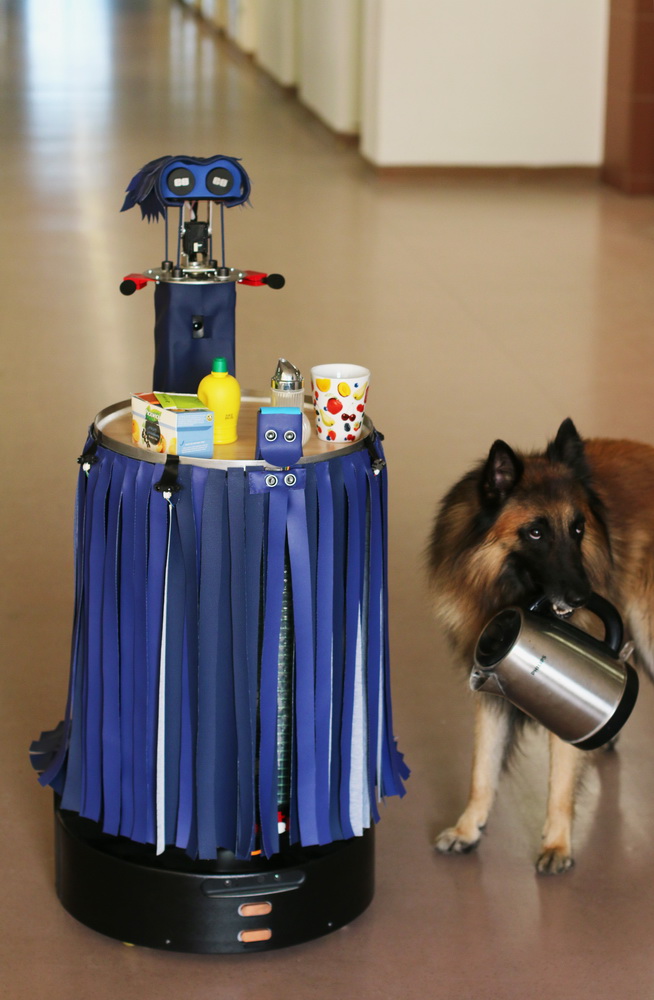
The group

Ádám Miklósi
Ádám came up with the idea for my existence. He leads the research group that works with me, and I owe it to him for establishing ethorobotics, which led to my creation as well. He also thinks a lot about my future plans.

Márta Gácsi
Márta, the other leader of the team, is the one who figures out what other abilities I might need and how I should behave when meeting guests. She helps decide which experiments I should participate in.

Bence Ferdinandy
Bence is the one I owe most of my abilities to. He’s a true python-charming physicist who works tirelessly every day to help me understand more about the world and communicate more easily with you, humans.

Beáta Korcsok
Bea takes care of my everyday issues and helps me shine in experiments. She designed my cover and organizes opportunities for me to meet you in person or online.
The team working with me, however, is even bigger than this, including biology students from ELTE, engineering students from BME, as well as researchers from abroad, all working to make me smarter and more capable.
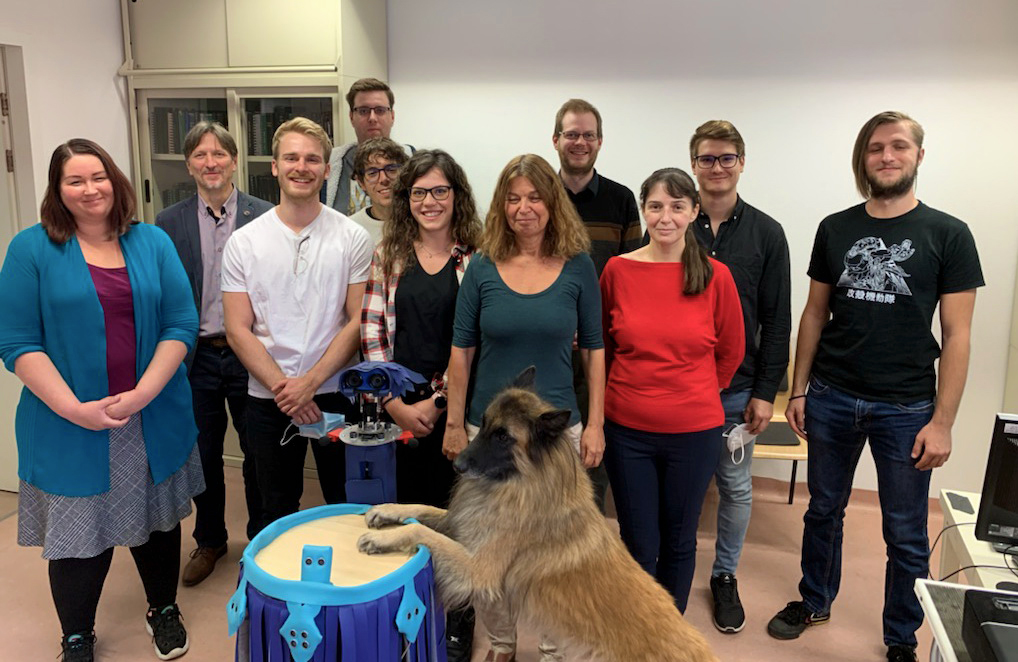
From the back, from left to right: Bence Kálmán, Ádám Miklósi, Adrián Campazas Vega, Bence Ferdinandy, Balázs Morvai, Beáta Korcsok, Lukas Schüler, Claudia Álvarez Aparicio, Márta Gácsi, Katalin Amri, János Fülöp Pelle, and my dog friend, Kósza (2021. 10. 04.)
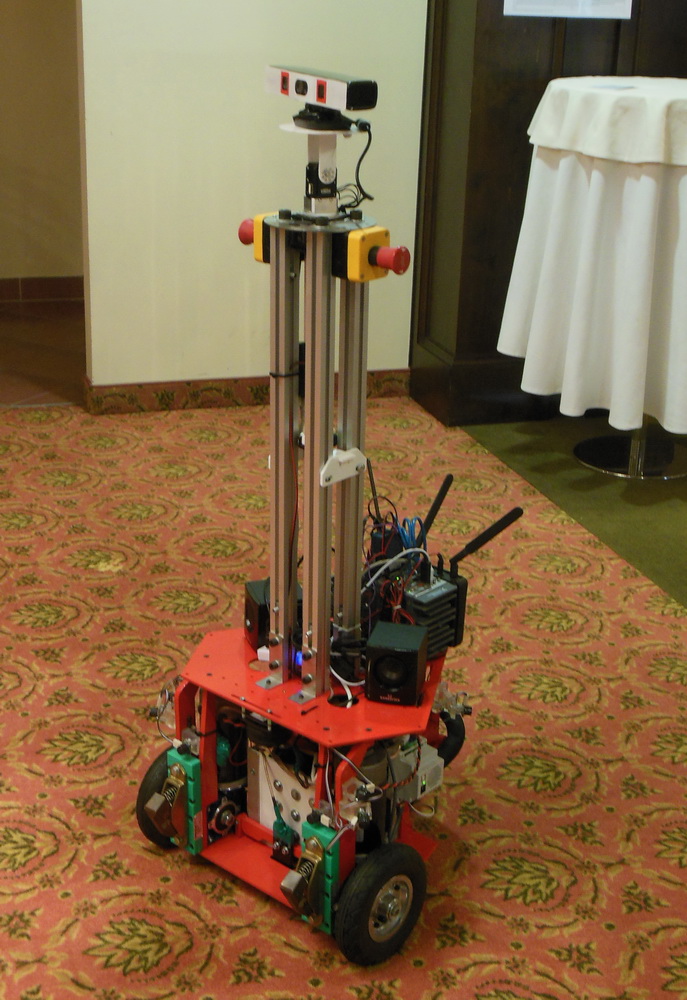
My next relative, whom we simply called Ethon 2, had a simpler appearance, but was considerably taller compared to Ethon. Ethon 2 easily reached the tables and handled doorstops better than its predecessor. Although Ethon 2 did not participate in experiments, it assisted in teaching BME engineering students. I also owe Ethon 2 a lot, as I inherited my neck and cameras from it as well.
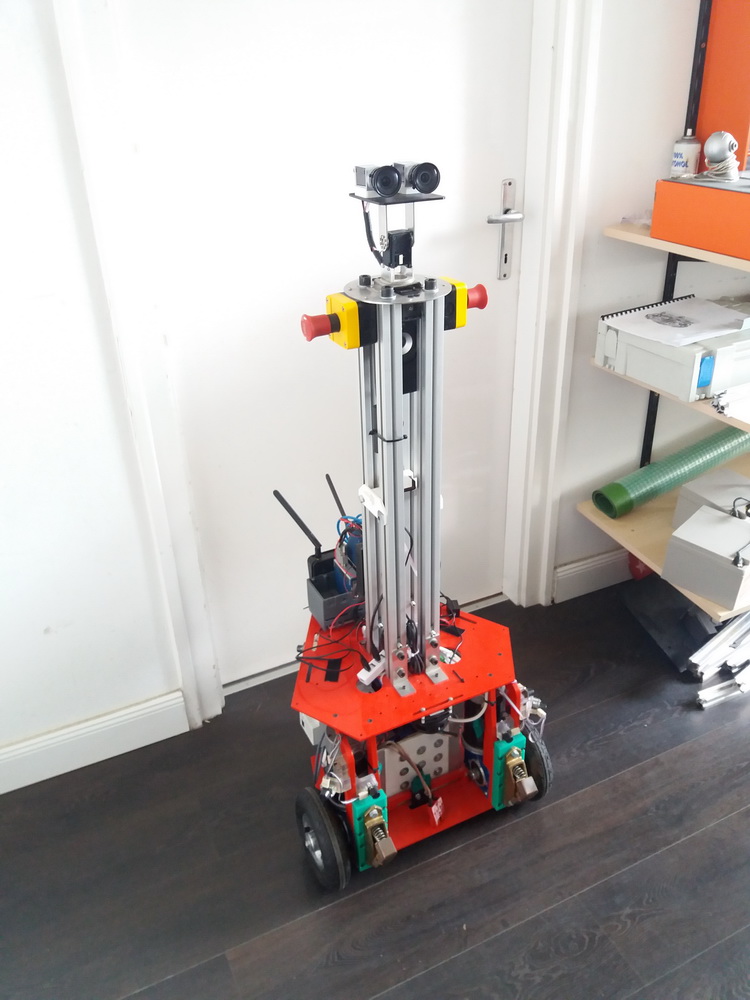
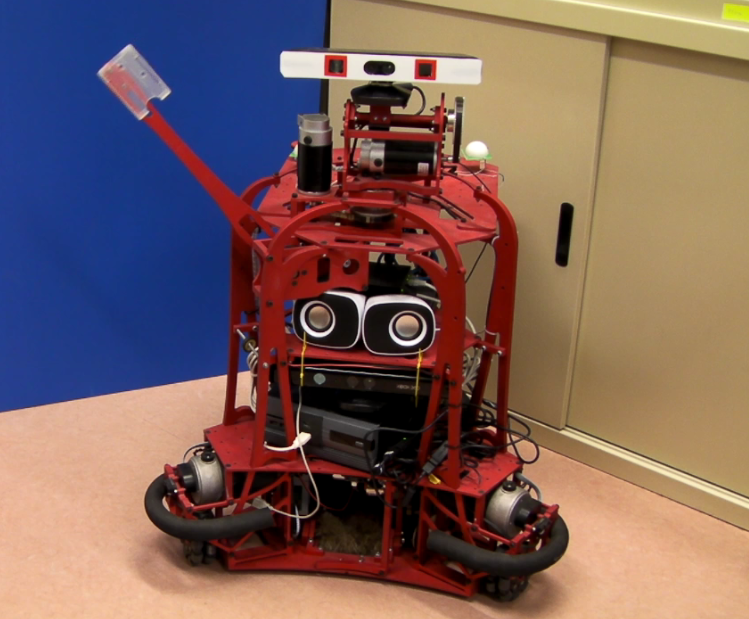
I hope to meet another predecessor of mine one day, Ethon. Ethon already resembled me much more, but I think it had a more artistic flair, which is evident in its appearance: it mostly looked like an abstract, triangular pyramid. Ethon moved with holonomic propulsion, but it also had arms and saw the world with a Kinect on its movable neck, although it used separate laser scanners and ultrasonic sensors for navigation. Ethon’s goal has been to become a great receptionist at the Department of Ethology and to escort arriving visitors to the researchers working in the department. Although it couldn’t learn everything needed for this, it could successfully navigate the department alone for hours, patrolling between different rooms and avoiding passersby. Moreover, it could even wave to people upon meeting them.
Since then, Ethon has moved abroad to help with ethorobotics research elsewhere.
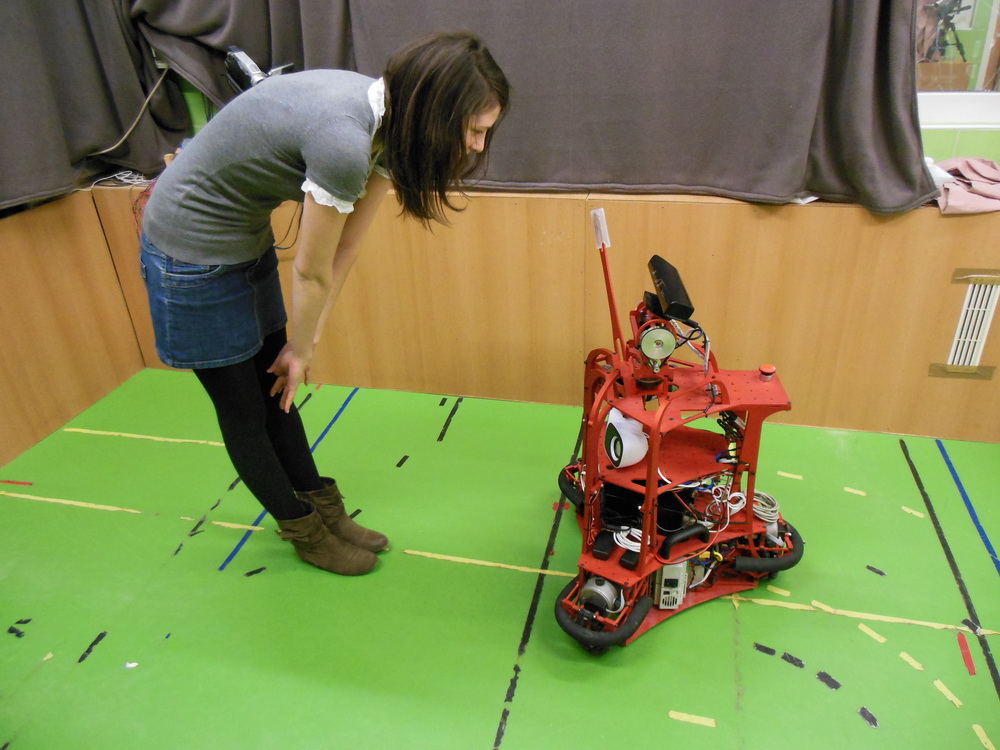
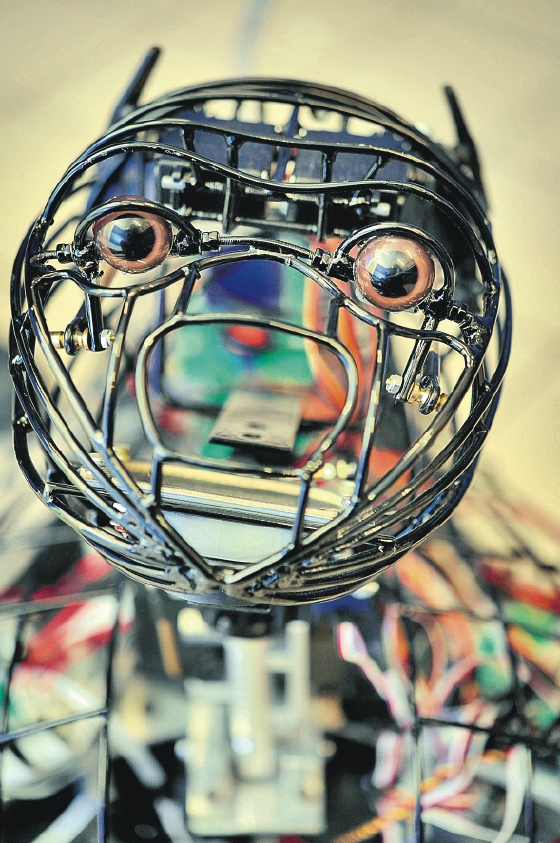
MogiRobi was the first robot designed for ethorobotics research by the MOGI department of the Budapest University of Technology and Economics. It was very different from me, most of all it looked like a simplified dog with a movable head, ears, tail, and a rounded, flat triangle-like body shape. It also moved around with wheels like me, and used a so-called “holonomic” drive system, which allowed it to move similarly to animals: it could turn around or move sideways without turning with its whole body in the new direction, like a car would do.
MogiRobi helped a lot in the first ethorobotics experiments at the Department of Ethology, for example, in understanding how people try to teach the robot simple tasks, or what behavior makes people think that the robot made a mistake while they were away.
MogiRobi is currently enjoying its leave at the Informatics Institute of the University of Miskolc, where it will help in education and further research.
The experts at the ELTE TTK press helped me to show what I’m capable of in a short video, which you can watch here!